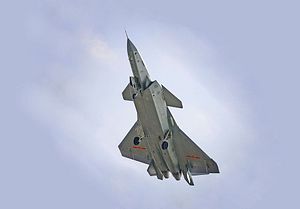At Aviation Week, aerospace analyst Richard Aboulafia makes the case against China’s technology transfer strategy in the aerospace sector. Aboulafia suggests, as Fatih Oktay has argued here at the Diplomat, that China’s technology transfer policies may have failed across an array of industries.
China approached its aerospace industry with the idea that it would build an advanced, national champion sector by integrating as much foreign technology as possibly into its own research and production processes. Chinese policy mandates that domestic producers only engage with foreign firms when technology transfer agreements are present; Chinese firms cannot simply acquire off-the-shelf components. China’s relatively lax enforcement of IP protection has made many foreign producers leery of such arrangements, especially in the aerospace sector. Instead of working out technology transfer agreements, they simply refrain from collaborating with Chinese companies, which hampers the technological development of those companies.
The result has been grim. China has been slow to develop internationally competitive civilian aircraft, and has seen its trade deficit in the aerospace sector explode. Aboulafia contrasts China’s approach with those of both Japan and Brazil, which have taken different paths to aerospace success. Brazil does not mandate technology transfer, which has enabled Embraer to take advantage of a wide variety of international suppliers unconcerned about threats to their IP. Japan has not attempted to build a “national champion” aviation industry, instead seeking to position itself within the global aerospace supply chain.
As security scholar Stephen Brooks argued over a decade ago, one of the core reasons that the United States accelerated past the Soviet Union in military sophistication was because the United States could take advantage of global trade in dual-use and defense technologies, while the USSR was stuck with defense autarky. Globalization spurred specialization and innovation, giving the United States access to much better technology, even when U.S. firms did not develop that tech on their own. In this sense, globalization was the (not entirely expected) “killer app” that gave the United States a critical military advantage.
China is different, of course, because China has opened itself to foreign technology and investment. The Chinese economy is obviously much more deeply integrated into the global system than the Soviet, but this does not necessarily mean that it is deriving as much benefit from that system as it could. Part of the story is foreign export controls; the United States still makes it difficult for China to invest in such industries as semiconductors, for example. But as Aboulafia and Oktay suggest, China’s own technology transfer policies may be self-defeating, keeping Chinese firms from accessing the most advanced equipment that the world has to offer.

































